Hans Memling, Diptych of Maarten van Nieuwenhove
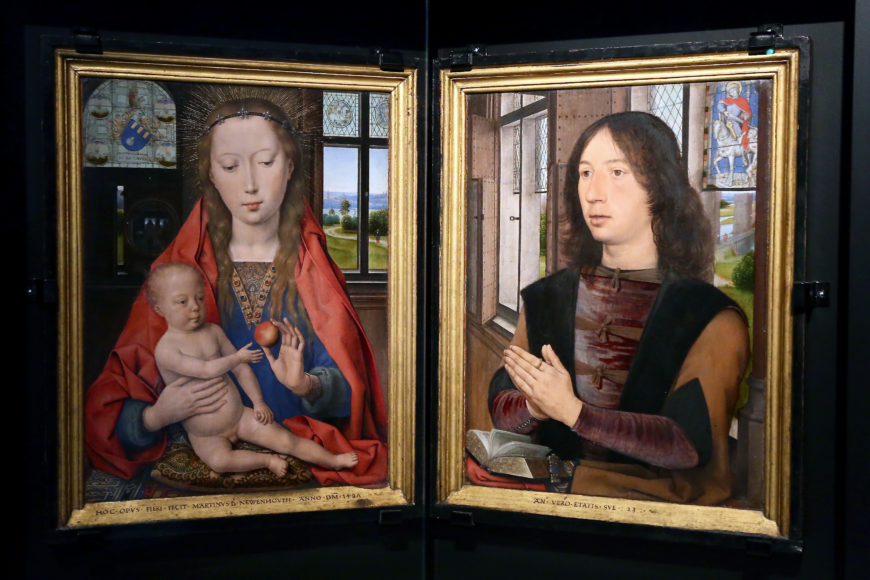
Hans Memling’s Diptych of Maarten van Nieuwenhove is no ordinary portrait. The subject Maarten van Nieuwenhove is pictured in a three-quarter view dressed in fine purple velvet. His hands are raised in a sign of prayer above an open manuscript, and his lips part slightly. The sitter’s gaze is fixed on a heavenly apparition of the Virgin Mary and Christ Child.
In 1487, a young Maarten van Nieuwenhove aged only twenty-three asked Hans Memling, the greatest portraitist in Bruges, to paint this intimate diptych. Memling was from Seligenstadt in Germany and is believed to have spent time in the workshop of Rogier van der Weyden.
The oil on oak diptych is one of the most important of the fifteenth century, both for its innovative subject matter and for its condition. Over the intervening centuries, the panels of many diptychs and triptychs were separated. In some cases, once-joined panels are now displayed as independent compositions on the walls of a museum; more often, a single panel from a larger, multi-panel work is all that survives today. Remarkably, the two panels of Diptych of Maarten van Nieuwenhove have never been removed from their original frames and remain joined by the original hinges.
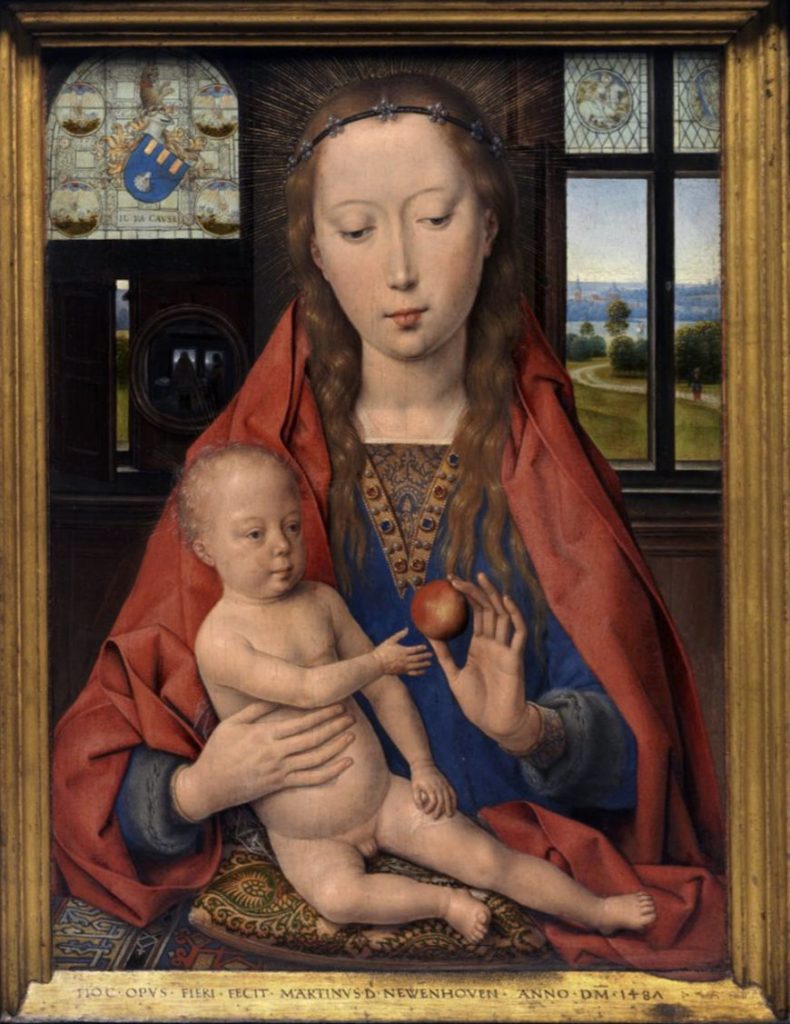
Portrait or Christian devotional object?
With markers of material wealth, familial ties, and Christian piety depicted across both panels, the Diptych of Maarten van Nieuwenhove is at the same time a portrait and an object made for private religious devotion. The Virgin Mary and Christ Child appear in the left wing of the diptych. Mary is richly dressed in a deep blue garment that is decorated with a triangle of brocade edged with gold cloth and a series of precious stones and pearls. A thin band of black fabric ornamented with clusters of luminous pearls adorns her hair. A cape of vibrant red cloth drapes around Mary and her infant son, who sits on a patterned pillow in the immediate foreground. The relationship between mother and child appears natural: Mary demurely tilts her head and supports the weight of her son, with her right hand tenderly held to his stomach. The Christ Child reaches for an apple held by his mother. Here, the apple refers to the forbidden fruit eaten by Adam and Eve in the Garden of Eden and symbolizes original sin. The child’s gesture toward the apple signals the acceptance of his own crucifixion, during which Jesus Christ takes on the sin of the world to redeem humankind.
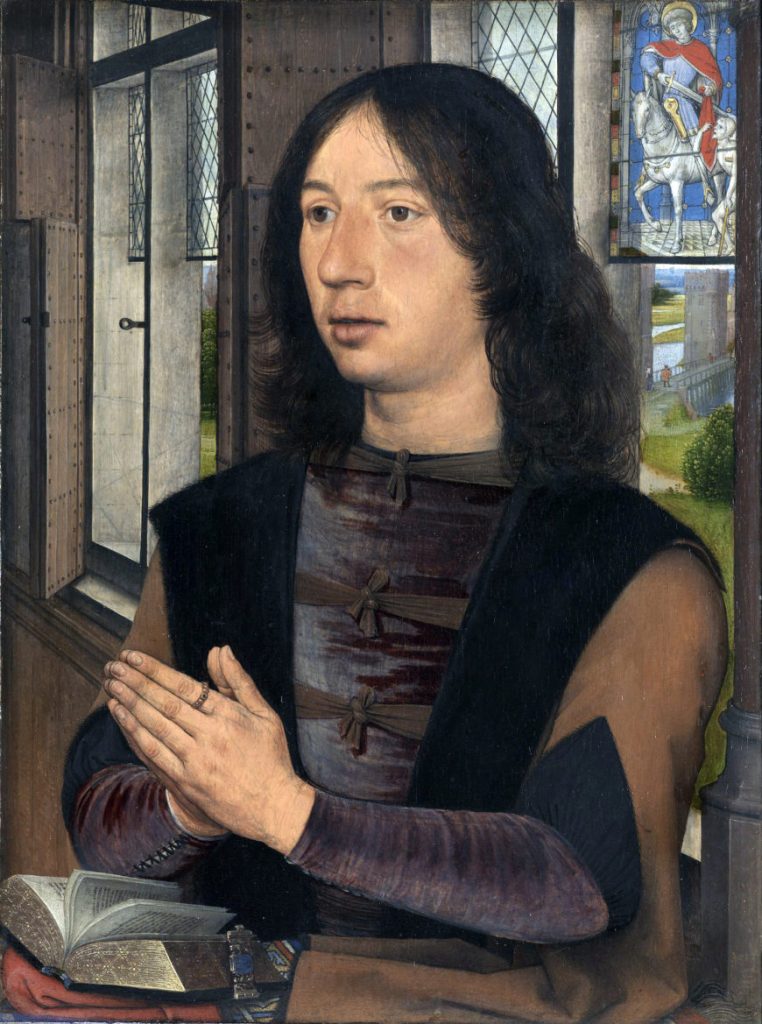
A portrait of Maarten van Nieuwenhove fills the opposite panel. The young sitter signals his material wealth and status as an elite citizen of Bruges through his dress. He wears a regal purple doublet made of velvet and a plum-colored overgarment. In Netherlandish works of art, material trappings like luxurious fabrics and jewels were often used to represent the status of figures.
Painted representations of luxurious materials were also used to glorify heavenly figures. In the Diptych of Maarten van Nieuwenhove, the clothing worn by the Virgin Mary is decorated with precious red and blue gemstones and luminous pearls. She is doubly crowned: her hair is adorned with a band of clustered pearls and a halo of radiant light frames her downturned face.
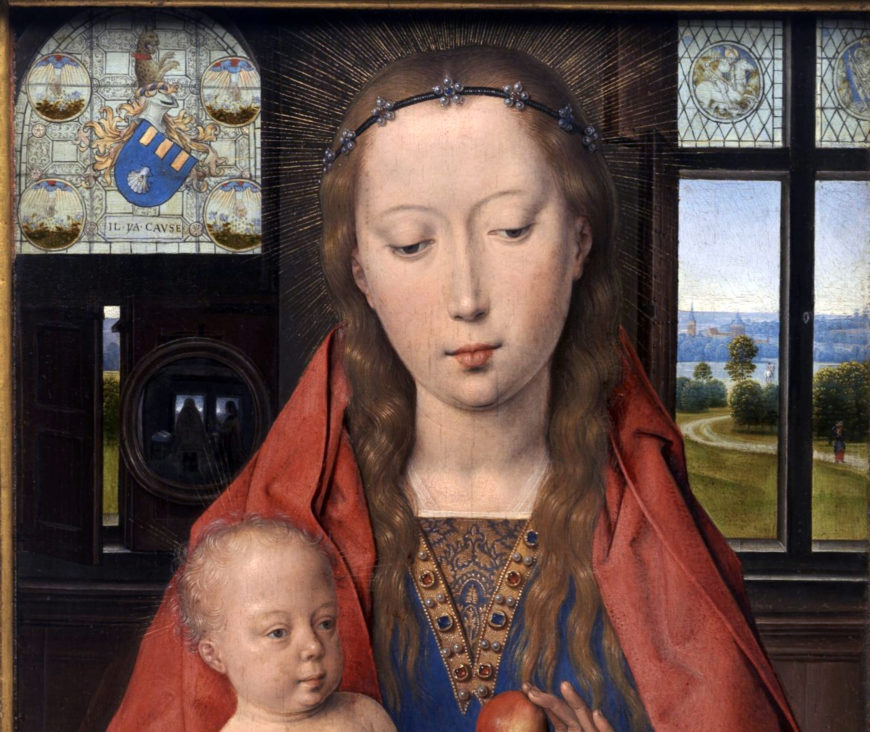
The ultimate purpose of portrait diptychs, along with donor portraits in other media, is the salvation of the sitter’s soul. A donor portrait would directly associate the sitter with his donation in the eyes of God, and for those displayed in public spaces, might inspire viewers to pray on his behalf. Small-scale portrait diptychs were instead displayed within the home and only accessible to a limited audience. During a sitter’s own lifetime, a portrait diptych would promote personal meditation.
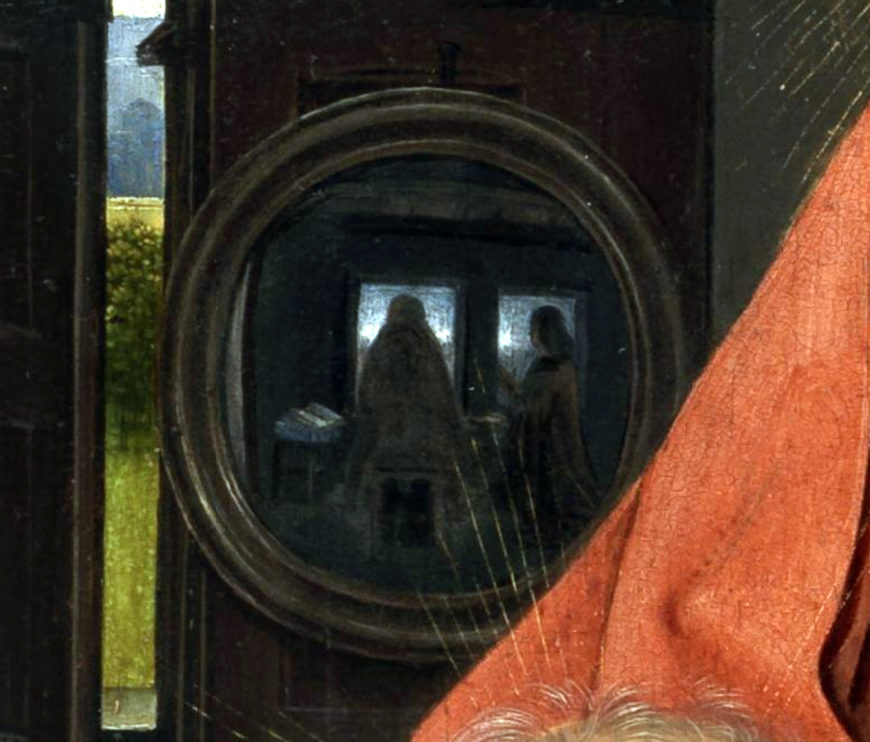
A convex mirror hanging on the wall of the left wing reflects both figures—the Virgin Mary seated on a stool and Van Nieuwenhove kneeling in profile. The reflection seen in the circular mirror makes clear to the viewer that the holy figure and sitter inhabit the same physical space. Memling’s representation of figures in a mirror adheres to Flemish pictorial tradition, where objects are rendered in nearly microscopic detail with careful attention paid to texture and reflective surfaces.
Additional resources
Burgundian Netherlands: Private Life on the Heilbrunn Timeline of Art History
Lorne Campbell, The Fifteenth Century Netherlandish Schools (London: National Gallery Publications, 1998).
John Oliver Hand, Catherine A. Metzger, and Ron Spronk, Prayers and Portraits: Unfolding the Netherlandish Diptych (Washington: National Gallery of Art, 2006).
Paula Nuttall, From Flanders to Florence: The Impact of Netherlandish Painting, 1400-1500 (New Haven: Yale University Press, 2004).
- Dr. Rachel M. Carlisle, "Hans Memling, Diptych of Maarten van Nieuwenhove," in Smarthistory, November 21, 2022, accessed February 21, 2023, https://smarthistory.org/hans-memling-diptych-of-maarten-van-nieuwenhove/. ↵

